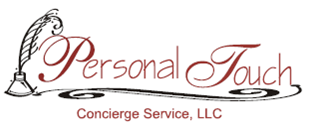Making the Most of Your Virtual Assistant
I’ve spent 18 years in the virtual assistant industry, watching partnerships flourish – or sometimes struggle. I’ve seen what works, what doesn’t, and most importantly, what differentiates between a good VA relationship and a great one. Let me share some insider knowledge to help you maximize your virtual assistant partnership.
First, you must understand what type of VA you’re working with. There are two main categories in the industry: specialists who focus on specific skills like social media management or bookkeeping and generalists who can handle various administrative tasks. Each has its place, and your choice should depend on your needs. If you’re unsure which type you currently have, it’s worth taking a step back to evaluate.
One of the most successful tools I recommend is a Do, Don’t Do, or Delegate checklist. Before you can effectively work with your VA, you need to get crystal clear on your task categories:
– Do: Tasks that truly need your expertise or that you genuinely enjoy
– Don’t Do: Tasks that should be eliminated from your workflow entirely
– Delegate: Everything else that could be handled by someone else
I’ve watched business owners transform their productivity using this simple list. The right categorization and delegation strategy can free up significant time in your week that you’ve been needlessly spending on tasks that could be handled by someone else.
From my experience in the VA industry, the most successful partnerships start with clear expectations and solid systems. I recommend creating detailed Standard Operating Procedures (SOPs) for recurring tasks. Yes, it takes time upfront, but it’s an investment that pays off tremendously in consistency and efficiency.
When creating these SOPs, be thorough but not overwhelming. Break down complex processes into simple, actionable steps. Include screenshots where helpful, and always note any specific preferences or requirements. Think of these documents as your business playbook – they should be clear enough that anyone could pick them up and complete the task successfully.
Weekly (or whatever you find works) check-ins are essential. A 15-30-minute video call keeps everyone aligned and accountable without becoming burdensome. Use this time for task updates and to build a genuine connection with your VA. The most successful VA relationships often start with simple conversations about weekend plans or shared interests.
Here’s another important to remember: stop micromanaging your VA. I know it’s tempting – you’re investing good money and want to ensure it’s well spent. But tracking every minute of your VA’s time is counterproductive. Instead, focus on outcomes. Are they meeting deadlines? Delivering quality work? That’s what matters.
Let me share an industry secret: your VA likely has more skills than you realize. VAs often have hidden talents that only surface when you take the time to ask about their experience and interests. Many business owners are surprised to discover additional capabilities their VA possesses that could benefit their business.
Here’s a pro tip: record short video tutorials for complex processes. Create quick video showing your need, then ask your VA to document the steps. This creates a valuable training library that can be used again and again. This approach typically cuts training time in half for new tasks.
Communication style matters tremendously in virtual relationships. Be clear, be kind, and be responsive. When giving feedback, be specific about what worked well and what needs improvement. Remember that written communication lacks face-to-face interaction, so take extra care to ensure your tone comes across as intended, and keep that in mind when reading responses from your VA (or anyone for that matter).
When it comes to tools, use whatever project management system you’re comfortable with, but use it consistently. There are many good platforms out there, so you will be able to find the one that works best for you. Having all tasks and communication in one place is crucial for remote team success. Set up your system correctly, including clear categories, labels, and task due dates.
One thing to avoid is giving vague instructions. Instead of “update the website,” say, “update the pricing page with the new service packages, including descriptions and rates from the attached document, by Friday at 5 pm EST.” Specific instructions lead to better results – it’s that simple. It avoids your VA having to come back and ask you for clarification which, in turns, saves you time.
From my experience in virtual assistance, I can tell you that feeling valued makes all the difference in performance. Treating your VA as a valuable team member rather than just a task-taker, you’ll see their initiative and efficiency soar. VAs often transform from good to exceptional simply because their clients take the time to build a real working relationship.
Remember, your virtual assistant is an investment in your business’s growth. As someone immersed in the VA industry, I assure you that the time you spend setting clear expectations, creating solid systems, and building a strong working relationship will pay dividends in productivity and peace of mind. Your VA can be so much more than just a helper – they can be crucial to your business success.
Want to learn more about how we can help? Reach out and let’s schedule a free consultation to discuss your needs and answer any questions you may have.

Nickey Hollenbach
Personal Touch Concierge Service®

